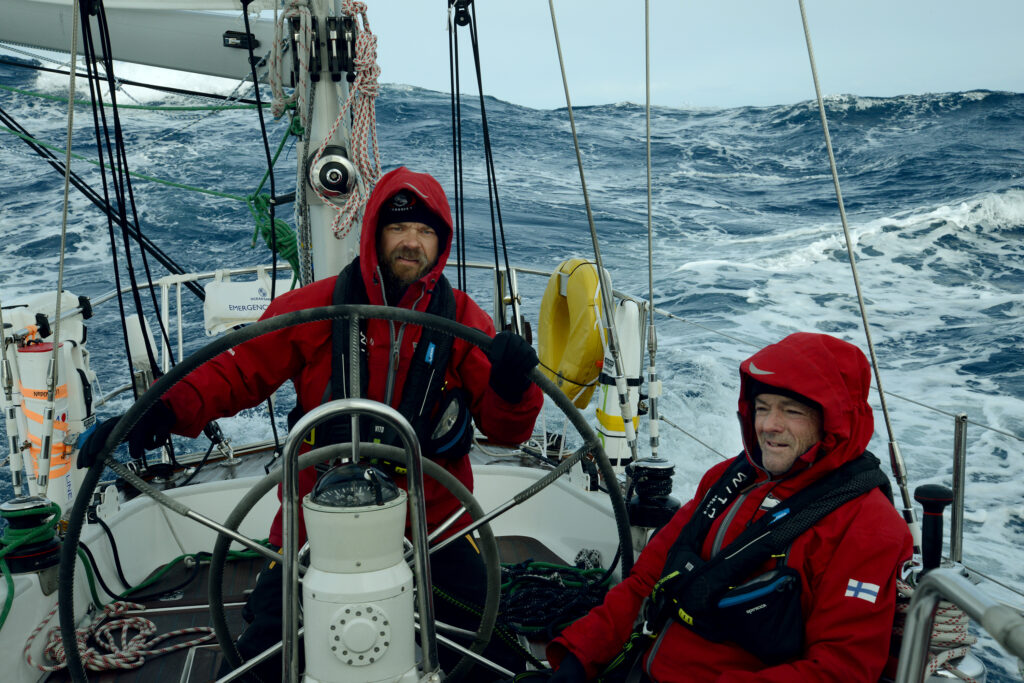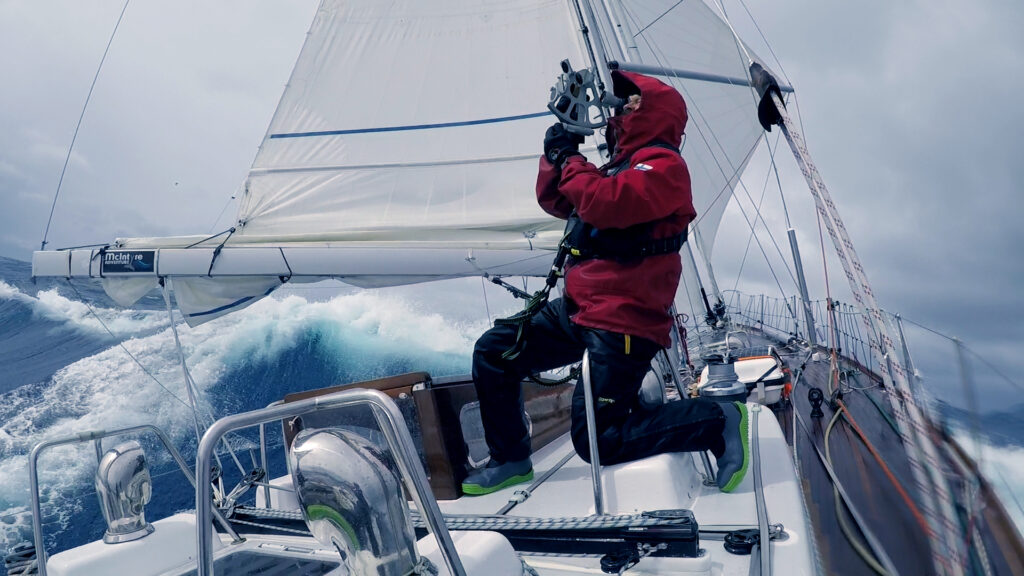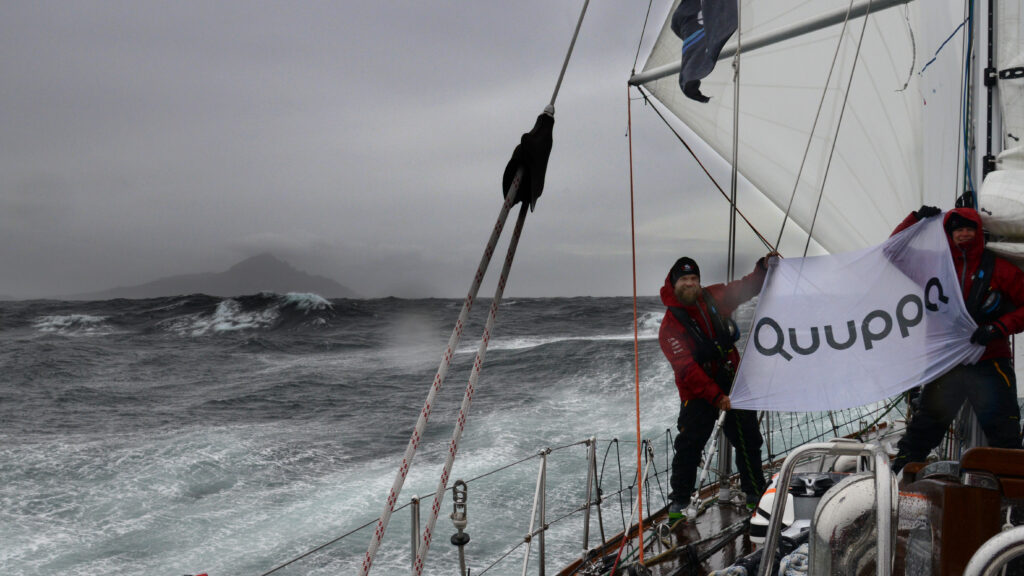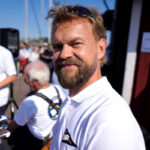Punta del Este, February 20, 2024
After a refreshing stopover in New Zealand, it was great to get back in business and continue the journey towards Cape Horn and the next stop in Punta del Este, Uruguay. The break lasted a full four weeks, and we even managed to take some time off from the project and travel around. But we quickly got back into the routine of sailing, racing and living on board.
The Ocean Globe Race is sailed in retro style, which means we are not allowed to use any modern technology, such as online weather information or routing software, during the race. However, before the start, we can utilise any means, and Lassi from our team is our specialist in this field, so he had again prepared the game plan for the first week for us. It was an interesting situation because many local experts advised us to go straight east, while Lassi’s analysis pointed south. He was very confident with his calculations, so we took him at his word and headed south, which turned out to be the right decision. We later learnt that we had actually led the race for a day or two, which was a nice surprise as we are the smallest and most old-fashioned boat in the fleet. What a great start to the 3rd leg!

Once we reached the westerly winds, the journey continued eastwards to the most distant waters on the planet, with the albatrosses again as regular guests. On the open ocean, navigation is pretty straightforward, with kilometres of water below us. A couple of waypoints had been set along the way to keep us north enough, clear of the icebergs. This is a very welcome safety feature that wasn’t used in the original races back in the old days. Our skipper Tapio told us that when he participated in the 1982 Whitbread race, they were the southernmost boat, sailing between the icebergs. Luckily, he said with a twinkle in his eye, they only saw them during daytime. 😱
I took responsibility for the sextant navigation on this leg. Three measurements of the sun’s height and then a few calculations, and you have your position. Depending on the conditions – how clear the sky is and what the sea state is like – you usually get an accuracy of a few miles, which is perfectly fine on the open sea. And when everything goes like in the movies, the accuracy can even be a few hundred metres.

So we sailed eastwards, kept the speed up, and everything went smoothly. A few spinnakers were torn in the process, but our skilful sailmakers made their magic and put them back together again. Some battle scars on the sails prove that we did some serious racing!
After four weeks on the open sea, we made landfall. A moment we had all been waiting for: The colossal cliffs of Cape Horn jutting out of the sea, marking the meeting point between the Southern Ocean and the Atlantic.
In the old days, Cape Horn was a major milestone for sailing ships as they carried trade around the world. The waters around the Horn have a reputation for being the most dangerous shipping passage in the world due to the strong winds, high waves, strong currents and icebergs. Many ships have been shipwrecked, and many sailors have died trying to round the Cape. Rounding Cape Horn is widely regarded as the sailing equivalent of climbing Mount Everest. In fact, more people have climbed Everest than have sailed around Cape Horn.
With that in mind, the moment was very special for us. I felt humble, proud and happy, but also a little sad as this was the end of Southern Ocean sailing for us. Until next time.

It ain’t over until the fat lady sings
Around the corner, the conditions changed radically, and within a few hours, the sea was almost calm, and we were flying our largest 200m2 spinnaker. But our biggest storm was yet to come. Over the next few days, we experienced tailwinds with gusts of up to 60 knots (110 km/h) and waves of up to 10 metres. We reefed the sails to the bottom and steered carefully to prevent the biggest waves from hitting us and falling on top of the boat. Occasionally, the cockpit was flooded, and, for example, my lifejacket popped when I was washed up on the aft deck. But as the saying goes, there’s no such thing as bad weather, only inappropriate clothing (and preparation). We are well prepared for such conditions and handled the situation like pros – or should I say, like true Cape Horners.
After this battle against the sea, the final stretch to Punta del Este (Uruguay) was a battle against the clock. We had a good chance of finishing second if we could keep up the pace. Of course, the weather forecast was very shady, and in our chat with our radio team in Finland, they encouraged us with the wishes that the wind would hold until the finish line.
On the morning of 18 February, we crossed the finish line as the seventh boat in the fleet and in third place in the IRC ranking, a handicap method that allows boats of different sizes and designs to race together.
Overall, the 3rd leg was a fantastic experience, and the team keeps constantly improving, which is also reflected in the results. We are really looking forward to the final leg to the UK, starting on 5 March. Now we have a few weeks of maintenance work and recharging the batteries to be fit for the fight!
As with the first two legs, I again made a song and a video. This time, a classic Hurriganes hit got new lyrics, telling the story of our journey around Cape Horn. Get On Board and enjoy the ride!

